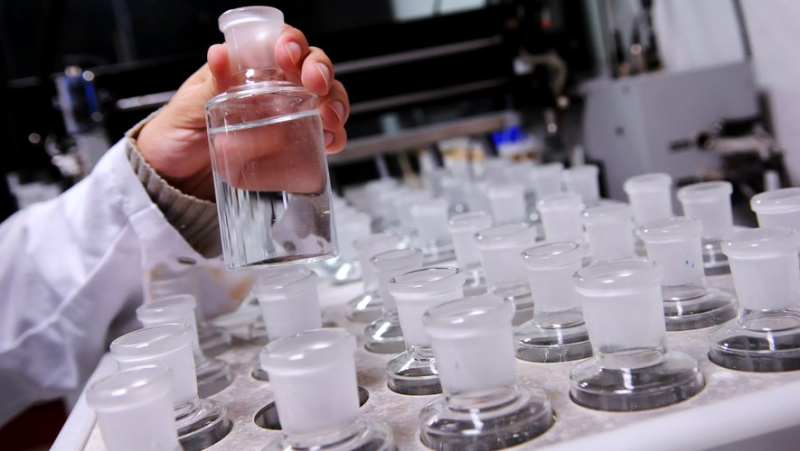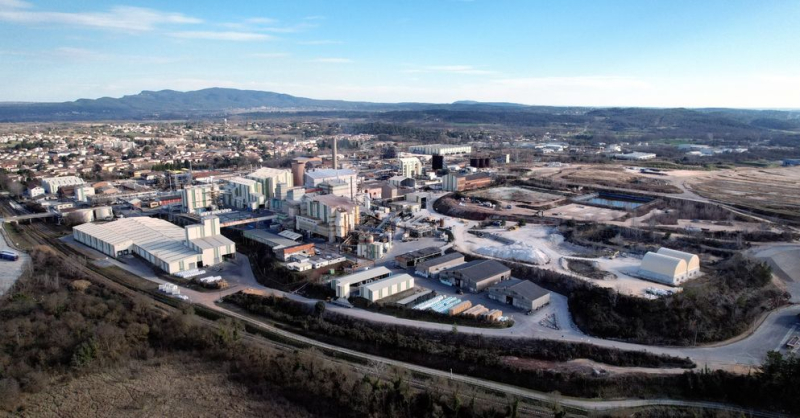Even before the European directive, ARS Occitanie goes fishing for eternal pollutants in our drinking water

From now on, PFAS will also be searched for in drinking water. Midi Libre – GILLES LEFRANCQ
In 2026, Europe will impose the control of PFAS in water installations intended for human consumption. An advance directive in the region where these pollutants have already been talked about, around the Solvay factory in Salindres.
They are everywhere. PFAS, also called "per- and polyfluoroalkyl substances",are chemical components widely used since the 1950s in various industrial fields and everyday consumer products for their non-stick, waterproofing or resistance to high heat capabilities: food packaging, pans, cosmetics, textiles, etc. Problem: these PFAS degrade very little and are found in all environments, water, air and soil, while science is beginning to establish its potential effects on health – including an increase in the risk of cancer kidney. Hence their nickname "eternal pollutants".
Twenty Pfas sought out of 4000 identified
The authorities have taken up the subject. Too late ? That’s another debate. In 2026 in any case, "a European directive will impose a systematic search for twenty PFAS (out of 4000 identified, Editor's note) in the routine health control of all water installations intended for human consumption", informs the regional director of the regional health agency (ARS) of& ;rsquo;Occitanie, whose services already carry out nearly 40,000 analyzes per year to check the potability of the water that arrives at our taps. But the health issue pushed Didier Jaffre, as his counterpart from Auvergne Rhône-Alpes has already done, to anticipate this obligation, "also for already get the operators used to it.

Didier Jaffre, director of ARS Occitanie. Midi Libre – SYLVIE CAMBON
Targeted controls
"We are launching, this month of March, an exploratory campaign to measure now the presence of these PFAS", announces Didier Jaffre. In total, 329 sampling points will be checked in the thirteen departments and these were not chosen at random. "They will be targeted around the most sensitive sites", specifies Yannick Duran, environmental health engineer. Translation: places where human, industrial or agricultural activity is likely to produce perfluorinated. Which resonates with recent news: in February, the Générations futures association denounced, with their own analyzes in hand, "a world record for eternal pollutants around the site of the Solvay chemical platform in Salindres", in the Gard, where a study revealed a higher number of cases of glioblastomas, rare brain tumors. High concentrations of TFA, trifluoroacetic acid (up to 19 micrograms per liter), have reportedly been measured at the taps of certain local residents.

The Salindres factory was again singled out last February. Free Midday
Accredited laboratories
Didier Jaffre assures that there is no cause and effect link. "It has been several months since we decided on this exploratory campaign. It took the time of public procurement, since it is laboratories Cofrac accredited by the health authorities which are responsible for these controls", replies the boss of ARS Occitanie. Which specifies, without commenting on the analyzes of Générations futures, "that only the figures from these accredited laboratories guide public action". Salindres is, however, one of the 46 Gard sites controlled.
For the moment, ANSES has not defined the health threshold which would require the authorities to prohibit the consumption of water due to a too high presence of PFAS. This will be by 2025. In the meantime, the ARS has modeled its standard on the drinking water directive and will therefore decide on measurements from a concentration greater than 0.1 microgram per liter. "If the excess is significant, we will impose a consumption ban. If exposure does not present an immediate health risk, there will be a proportionate response, both with water treatment, and work with surrounding facilities" to reduce this "production" of pollutants. The results will be communicated "in complete transparency" during April.
Nothing unusual so far
L’ARS, however, already has data. Since June 2023, 121 samples have been taken from new water collection points intended for consumption currently in the process of being authorized. "So far, nothing abnormal has been noted", assures Didier Jaffre. He hopes to be left empty-handed with this new fishing for eternal pollutants.
“The most controlled food product”
Didier Jaffre took advantage of this announcement on the anticipated surveillance of PFAS to remind us that "water is the most controlled food product". Thus, across the region, there are 15,000 monitoring points, from the catchment to the tap. In 2023, 39,400 analyzes were organized, to which must be added the self-monitoring "mandatory" carried out by operators, communities territorial or delegated companies. Some 330 parameters are analyzed, both to check the good physico-chemical characteristics of the water or to detect potential undesirable substances: pathogenic germs, nitrates, pesticides, micropollutants… L’an In the past, 95% of the results complied with the quality limits in force, 5% therefore triggered corrective actions, either curative in the short, medium or long term, or preventive. A work that climate change makes even more necessary. "The scarcity of water has the effect of concentrating pollutants".
I subscribe to read more




